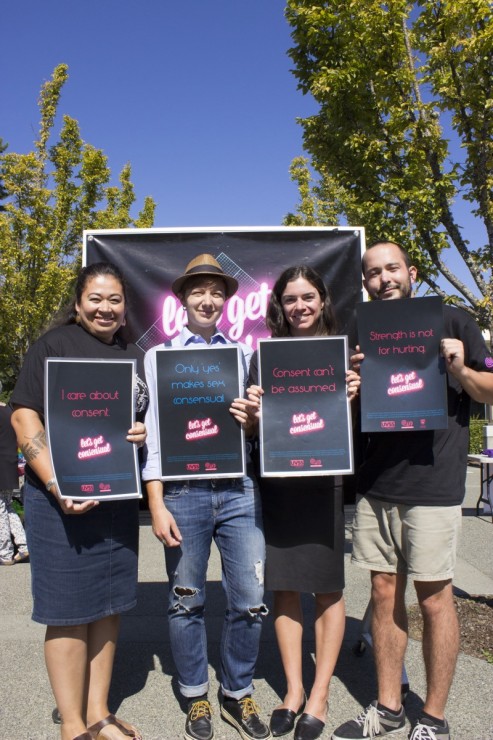 For the first time, Sexualized Violence Awareness Week will be included as part of UVic’s New Student Orientation. The Anti-Violence Project (AVP), the on-campus sexual assault centre, is co-operating with the University of Victoria Students’ Society (UVSS) and UVic to organize the events, which includes public workshops and an accompanying social media campaign.
For the first time, Sexualized Violence Awareness Week will be included as part of UVic’s New Student Orientation. The Anti-Violence Project (AVP), the on-campus sexual assault centre, is co-operating with the University of Victoria Students’ Society (UVSS) and UVic to organize the events, which includes public workshops and an accompanying social media campaign.
AVP Co-ordinator Carol Bilson explained that “this campaign resulted from last year when there were several incidences that happened around campuses, particularly UBC and Saint Mary’s University—there were chants that were sexist, encouraging underaged assault and non-consenting actions. Then UVic had its own three incidents during the holidays.”
Bilson said that the UVic Judicial Affairs office approached AVP as first responders to the UVic incidents and later saw the need for co-operative action. AVP volunteer Piotr Burek states that the goal of Sexualized Violence Awareness Week “is to create a culture on campus [that practises] consent – and to engage students, especially men, in challenging rape culture and ending gender-based violence. The week is full of events aimed at creating awareness around ending gender-based violence and working toward healthy masculinities.”
The week’s events will consist in a variety of workshops hosted by AVP to discuss systems of oppression and consent. The UVSS will step up their “Let’s Get Consensual” campaign and will also run a pledge challenge, in which students can pledge to end gender-based violence. Burek says documentarian and activist Byron Hurt will be at UVic to speak about masculinity and gender-based violence. Local poet Jeremy Loveday will be performing spoken word and participating in discussions.
Bilson acknowledges that rape culture and its day to day manifestations lead to unhealthy actions, sexist jokes or gender expectations.
“Rape culture has gone unchecked for a long time and that has festered unhealthy versions of masculinity and hyper-masculinity.” Bilson recognizes the charge emphasizes the fault of men but readily acknowledges that all genders are complicit.
“Men and women have absorbed this knowledge [regarding rape culture and over-sexualization] . . . men and women have to acknowledge this—but statistically the assaults are still 95 per cent men as perpetrators.”
A pilot Men’s Circle was created in January following incidences of gender-based violence on campus. Burek said in an email statement that “the Men’s Circle involved discussions surrounding rape culture, the connections between gender-based violence and systems of oppression such as colonialism, sexism, or racism. As a restorative justice approach, the men’s circles helped these men challenge commonly held beliefs and assumptions created and enforced by our patriarchal society.”
According to Bilson, the initial pilot Men’s Circle was successful, encouraging some of the participants to become student leaders. Burek added that “the purpose of the circle is to engage men in these issues, because for so long the work has been taken up by women,” and that current practices support the victim while punishing the perpetrator, instead of shifting the culture which surrounds the problem.
“We can’t take on colonization; we can’t take on patriarchy as a whole,” says Bilson, “but we can take on lateral violence, the microaggression, those rape-jokes, the misogynist comments, the put-downs in reference to the feminine and cat-calls—these things we can take on. All of these things provide the conditions for assaults to happen.”
The real intervention, Bilson believes, will occur during discussions among communities. “We think it’s possible that people will intervene at the bystander level—the lateral, and the peer level.” Bilson recognizes that intervening at the scene of the assault is unlikely; instead, changing attitudes and cultures might prevent incidents before they occur. She is optimistic about the campaign and acknowledges it will be a first among Canadian universities. “I would love to see a culture of rape to change to that of a culture of consent.”
For more information, visit www.antiviolenceproject.org.








